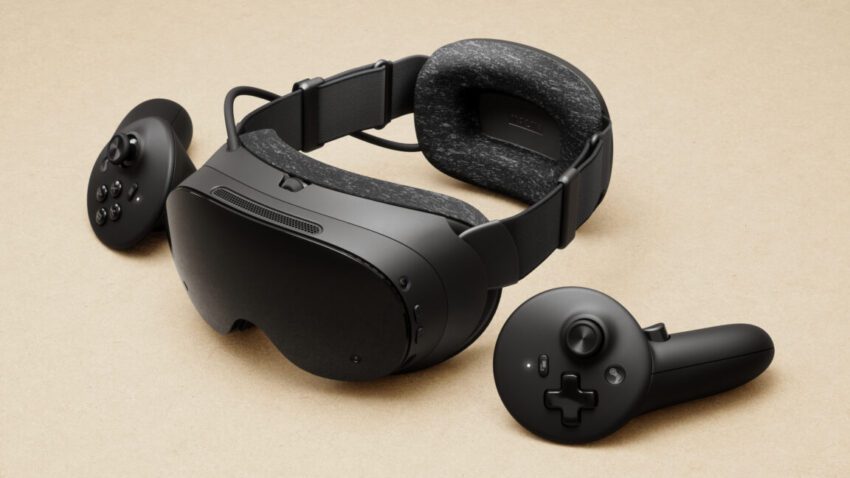
valve rejoins the vr hardware wars with Valve is set to re-enter the virtual reality hardware market with the announcement of its new standalone headset, the Steam Frame, scheduled for release in early 2026.
valve rejoins the vr hardware wars with
Background on Valve’s VR Journey
Valve Corporation, known for its innovative contributions to the gaming industry, made significant strides in virtual reality (VR) in 2019 with the launch of the Valve Index headset. This device was accompanied by the critically acclaimed game, Half-Life Alyx, which showcased the potential of VR gaming. The Index was well-received for its high-quality build, impressive tracking capabilities, and immersive experience. However, after this initial push, Valve appeared to step back from the VR scene, allowing competitors like Meta to dominate the market with regular updates and new hardware releases.
During this period, Meta, previously known as Facebook, released several iterations of its Oculus line, including the Oculus Quest and Quest 2, which gained popularity for their standalone capabilities and user-friendly interfaces. This shift left the Valve Index, a tethered headset reliant on a powerful PC, feeling increasingly outdated. As a result, many in the gaming community speculated about Valve’s commitment to VR technology and whether the company would return to the hardware arena.
The Steam Frame: Features and Specifications
After years of speculation and anticipation, Valve has officially announced the Steam Frame, a standalone VR headset designed to run both VR and traditional Steam games. This device will operate on SteamOS, Valve’s proprietary operating system, and will have the capability to stream games wirelessly from a local PC. This feature is particularly appealing for gamers who already own a library of Steam games and wish to experience them in a VR environment.
Technical Specifications
The Steam Frame is powered by the Snapdragon 8 Gen 3 processor, a significant upgrade from the Snapdragon XR2 Gen 2 used in the Meta Quest 3. This new processor will enable enhanced performance, allowing for smoother gameplay and improved graphics. The headset will feature 16 GB of RAM, ensuring that it can handle demanding applications and multitasking efficiently.
In terms of display, the Steam Frame boasts a resolution of 2160 x 2160 pixels per eye, which is on par with current high-end VR headsets. The field of view is reported to be “up to 110 degrees,” providing a wide and immersive visual experience. Additionally, the headset supports refresh rates of up to 144 Hz, which is crucial for reducing motion blur and enhancing the overall fluidity of the VR experience.
Storage Options
Valve is offering the Steam Frame in two storage configurations: 256 GB and 1 TB. This flexibility allows users to choose a model that best suits their gaming needs. Furthermore, both models will feature a microSD card slot for expandable storage, addressing one of the common concerns among VR users regarding limited internal storage capacity.
Market Positioning and Competition
The announcement of the Steam Frame places Valve back in direct competition with established players in the VR market, particularly Meta. The Meta Quest 3, which has already gained traction among consumers, offers a compelling standalone experience with a robust library of games. Valve’s decision to introduce the Steam Frame indicates its intent to reclaim market share and cater to a dedicated audience of PC gamers who prefer the Steam ecosystem.
While the Steam Frame’s specifications are impressive, it remains to be seen how it will differentiate itself from existing products. Valve’s strength lies in its software ecosystem, particularly the Steam platform, which boasts a vast library of games and a strong community of developers and players. This could give the Steam Frame an edge, especially if Valve can leverage its existing user base to promote the new headset.
Implications for the VR Industry
The re-entry of Valve into the VR hardware market could have several implications for the industry as a whole. Firstly, it may spur innovation among competitors, prompting them to enhance their offerings to maintain their market positions. The introduction of a high-performance standalone headset could lead to advancements in VR technology, including improved graphics, more immersive experiences, and better user interfaces.
Moreover, Valve’s commitment to VR may encourage more developers to create content specifically tailored for VR platforms. The success of Half-Life Alyx demonstrated the potential for high-quality VR games, and with the Steam Frame, developers may feel motivated to invest in VR projects, knowing there is a new hardware option available to consumers.
Stakeholder Reactions
The announcement of the Steam Frame has elicited a range of reactions from various stakeholders in the gaming community. Enthusiasts and VR advocates have expressed excitement about Valve’s return to the hardware market, viewing it as a positive development for the future of VR gaming. Many believe that Valve’s expertise in game development and hardware design will result in a product that meets the needs of gamers looking for high-quality VR experiences.
On the other hand, some industry analysts have raised concerns about the timing of the release. With the VR market becoming increasingly competitive, there are questions about whether Valve can successfully capture the attention of consumers who have already invested in other platforms. Additionally, the pricing of the Steam Frame remains a critical factor that could influence its success. While Valve has not yet disclosed pricing details, it will need to strike a balance between offering a premium product and ensuring it is accessible to a broad audience.
Conclusion
Valve’s announcement of the Steam Frame marks a significant moment in the evolution of virtual reality hardware. With its advanced specifications and the ability to run a wide range of games, the Steam Frame has the potential to reinvigorate interest in VR gaming and challenge the dominance of competitors like Meta. As the launch date approaches, gamers and industry observers alike will be watching closely to see how Valve positions the Steam Frame in a rapidly changing market.
Source: Original report
Was this helpful?
Last Modified: November 13, 2025 at 12:37 am
1 views














